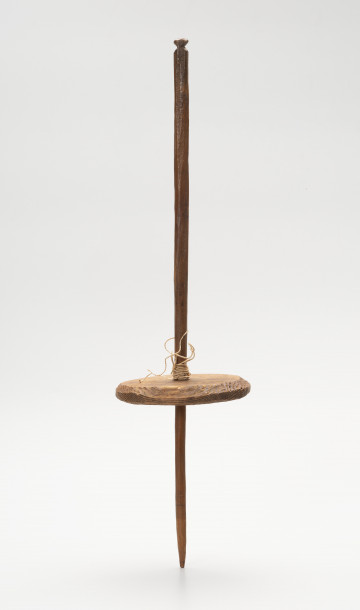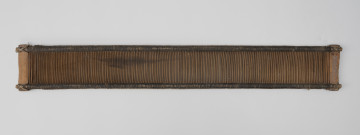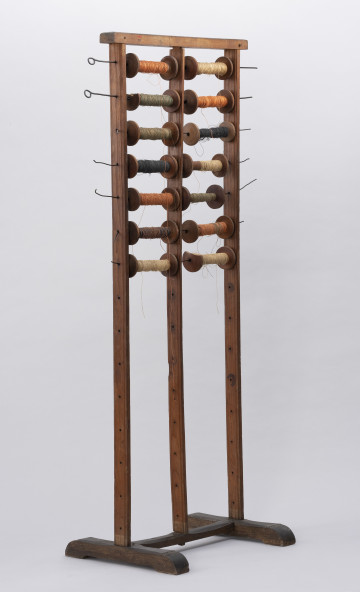
Distaff
1890 — 1939
National Museum in Szczecin
Part of the collection: Folk weaving
Known since at least the fifth century BC, the weaving shuttle is the part of the loom not connected to its other mechanisms. The weft stored on it is flipped by hand or by means of a flipping mechanism through a pass in the warp, called a yawl, which is formed when the heald-frames begin working. The weft, carried out in this way across the warp, interweaves with it to form the fabric. The simplest weaving shuttles are flat, narrow pieces of wood with notches at the ends to hold the weft. The more complex versions, as the name suggests, look like a small boat with a smaller or larger longitudinal depression. The thread is wound inside the shuttle on a winding or small tube, or coil. The thread was wound onto the coil using a simple hand-powered tool called, depending on the region, a potak or sudłak, which was later superseded by the reel. The best wood for the production of traditional shuttles is wood that is resistant to mechanical impact and abrasion, giving a smooth surface after polishing, as the shuttle is in contact with the warp and any unevenness or scratch could risk breaking it. Twigs with an easily hollowable centre were used to make coils. Today, both natural raw materials and plastic are used. The presented shuttle dating from the turn of the 20th century has an asymmetrical shape. On a metal rod placed inside the device, a thread – probably linen – is wound. Agnieszka Słowińska
Author / creator
Object type
shuttle (weaving)
Technique
carpentry techniques
Material
wood, metal
Origin / acquisition method
legal transfer
Creation time / dating
Creation / finding place
Owner
Muzeum Narodowe w Szczecinie
Identification number
Location / status

1890 — 1939
National Museum in Szczecin

1850 — 1920
National Museum in Szczecin

1801 — 1939
National Museum in Szczecin
DISCOVER this TOPIC
Castle Museum in Łańcut
DISCOVER this PATH
Educational path